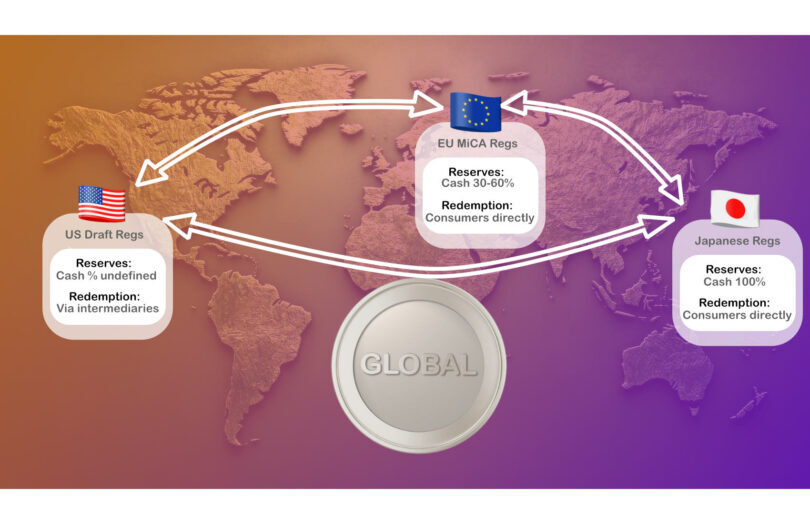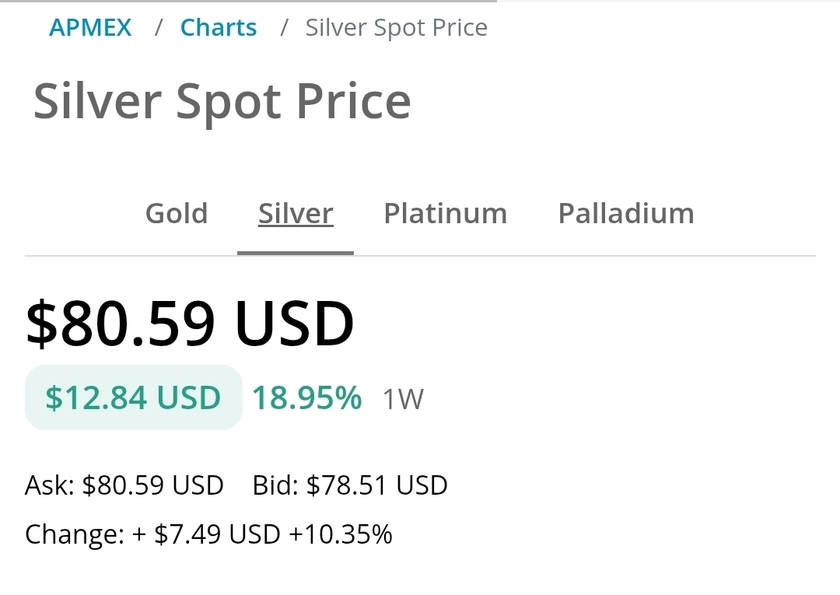Many countries are introducing stablecoin laws, each with their own requirements, especially regarding reserves. If the same stablecoin brand is issued in multiple jurisdictions using the same brand, is it fungible (or entirely interchangeable)? There’s the practical fungibility versus the legal one, especially if a stablecoin collapses.
Highlights:
- Each jurisdiction imposes different reserve composition and redemption rules for stablecoins
- Multi jurisdiction issuers use arrangements between regions to harmonize reserves
- Issuers cannot precisely track how many tokens circulate in each region due to secondary market transfers
- Formal crisis plans will determine outcomes during stress events
- During a collapse, holders in specific regions could face different recovery rates depending on local reserve adequacy.
While the biggest use case for stablecoins is currently for cryptocurrency transactions, there’s a growing appreciation of their benefits for cross border payments. Plus, the infrastructure to support this is expanding, with Stripe’s acquisition of Bridge being one of many examples. After passing the $200 billion issuance mark in December 2024, many predict it won’t be long before stablecoins reach the trillion mark. Citi recently estimated a base case of $1.6 trillion by 2030, with a bullish estimate of $3.7 trillion.
Defining fungibility
The definition of ‘fungible’ according to the Oxford Dictionary:
“Of a product or commodity that has been contracted for: that can be replaced by another identical item without breaking the terms of the contract. More generally: interchangeable, replaceable.”
What’s notable about this definition is that stablecoins issued in different jurisdictions will likely have separate contracts.
The core fungibility issue arises because a resident of one jurisdiction might receive a payment that involves a token that’s technically issued in another jurisdiction. In the examples we’re discussing, these are the same brand of tokens.
Technically, EU crypto exchanges may be breaking the rules
Imagine a global stablecoin, let’s call it GlobalCoin, issued in two jurisdictions e.g. Japan and EU each meeting local requirements. Clifford Chance partner, Diego Ballon Ossio, highlighted that this is potentially problematic in the EU. He noted that, “technically the EU issuer or exchange should have something in place to avoid the Japanese version of that coin to be listed, exchanged, and traded in the EU. Because it’s not exactly the same coin, particularly if say liquidity requirements differ.”
He gave the example of someone from Japan paying an EU resident with GlobalCoin via an EU cryptocurrency exchange. From the user’s perspective, a GlobalCoin is a GlobalCoin, they can’t differentiate where it was issued.
Mr Ballon Ossio continued, “If that coin was used in an exchange, that exchange is now admitting to trading a coin that technically hasn’t been approved because the Japanese version wasn’t approved. And actually you would not be allowed to offer that coin because that coin is being sold as an e-money token, but it’s actually been issued by a non-EU issuer.”
The EU’s MICA regulations don’t deal with this situation. There’s a pragmatic approach involving the issuers rebalancing the books between the jurisdictions, which isn’t perfect. It will work 99.99% of the time, but will be tricky in a de-peg event.
USDC is the first prominent example
The most prominent example of a stablecoin that’s issued in multiple jurisdictions is Circle’s USDC, which is primarily issued in the United States. While this article references USDC a few times, the content and issues are not specific to Circle or USDC.
Circle has EU emoney and MiCAR licenses and issues USDC in France under European rules. The EU version of USDC has a separate issuer, different terms (ie. a separate contract) and ringfenced reserves. For example, all EU USDC stablecoin holders can directly redeem the stablecoin with Circle SAS, provided they go through KYC and compliance procedures. In the US, only larger entities and distributors (primary participants) can redeem directly. The UK has changed its planned approach and now intends to allow redemption only via primary participants.
Jurisdictions have different reserve requirements
Looking at its reserves, in the United States the USDC stablecoin keeps around 15% of its reserves in bank deposits, according to Circle’s transparency reports. USDC temporarily lost its dollar peg when Silicon Valley Bank collapsed in 2023 holding $3.3 billion of USDC reserves. Before that, Circle kept around a quarter of its reserves at banks. Even 15% is more than most stablecoin issuers, in part because holders of other stablecoins often switch to USDC to off ramp. For example, Tether only keeps around 0.1% at banks.
Turning to EU’s MiCAR, it requires smaller coins to keep 30% of their reserves in cash, and larger ones 60%. The regulations attempt to address the risks by limiting the amount held by a single bank.
Another example is Japan, which currently requires 100% of stablecoin reserves to be held in bank accounts, although it’s exploring changing the rules to support government bonds.
In the case of Circle, it also has a license in Singapore. For its Singapore issuance, all reserves are held in a trust account at Standard Chartered Singapore.
Estimating regional stablecoin issuance
Each jurisdiction expects stablecoin reserves to be held onshore in the proportions required by law. Yet stablecoins are bearer tokens where most transactions take place in secondary markets, so issuers don’t know the identity of all their coin holders, or where they are based.
In order to rebalance the books between the regions, they have to estimate the regional figures. Europe has provided guidelines for how to do this for foreign currency coins, which involves getting reports from local crypto asset service providers (CASPs), including crypto exchanges and custodians. CASPs have to provide the issuer with reports on a daily basis. Self hosted wallets tend to be glossed over and these might be retail or institutional.
That said, if a large liquidity provider uses a coin issued in the US to pay for a multi billion Bitcoin transaction in the EU, that will move a lot of coins. However, some of these institutional wallets are traceable, although there is an increasing tendency for larger players to attempt to cover their tracks.
If jurisdictions don’t prescribe rules, then issuers will likely make estimates using issuance and redemption figures via primary participants (distributors).
In the case of USDC, in its MiCAR whitepaper it notes that it will rebalance the reserves between the two current jurisdictions. As one of the risks, the European USDC whitepaper says:
“Dual Issuer Risk. Circle LLC and Circle SAS have entered into a contractual arrangement to rebalance their respective reserves in the event that one reserve is no longer able to meet its liabilities. The Circle SAS Recovery Plan and Redemption Plan will take into account these intra-company considerations and outline a uniform and coordinated approach by both issuers in order to be able to cover any outstanding liabilities and satisfy redemptions in a prompt and equitable way.”
What happens if the GlobalCoin stablecoin fails?
As we’ve shown, stablecoin issuers can make best efforts to ensure the reserves are sitting in the correct jurisdiction. But they won’t know precisely how many stablecoins are held in each jurisdiction until everyone wants to redeem simultaneously. So what happens if GlobalCoin fails?
There are two ways this will be addressed. One is by having a plan in place, and the EU requires emoney token (stablecoin) issuers to have both recovery and redemption plans. However, these are not public documents. Mr Ballon Ossio was willing to speculate what the contents might include. If there were a shortfall, the treatment is likely to be similar to a client assets framework. This would usually spread the loss across a single class of asset holders. In other words, if there was a 10% shortfall in reserves, then a US dollar stablecoin would be worth 90 cents for redemption purposes.
A second path is for regulators in jurisdictions to have mutual agreements. Mr Ballon Ossio highlighted that in the banking world there’s the Basel Committee framework for banks. However, just looking at the US draft stablecoin regulations, MiCAR and Japanese regulations, the requirements for redemption and holding liquid bank balances are vastly different. While Basel implementations differ between jurisdictions, there’s more homogeneity compared to stablecoins.
This fungibility topic probably won’t matter for 99.99% of the time. As more and more jurisdictions pass legislation, there’s more need for laws to provide legal clarity on this topic, especially given cross border payments are a key stablecoin use case. Hopefully it will be a very long time before there’s a need to explore what happens in the 0.01% scenario: a failure of a multi-jurisdiction stablecoin.

🙏Please Support My Work 🙏
If you find value in my content, consider showing your support:
💳 PayPal – Simply scan the QR code 📲
🔗 Crypto – Support via Coinbase Wallet to: [email protected]
Your generosity keeps this mission alive! Namasté 🙏✨ #SupportIndependentMedia #Crypto





























